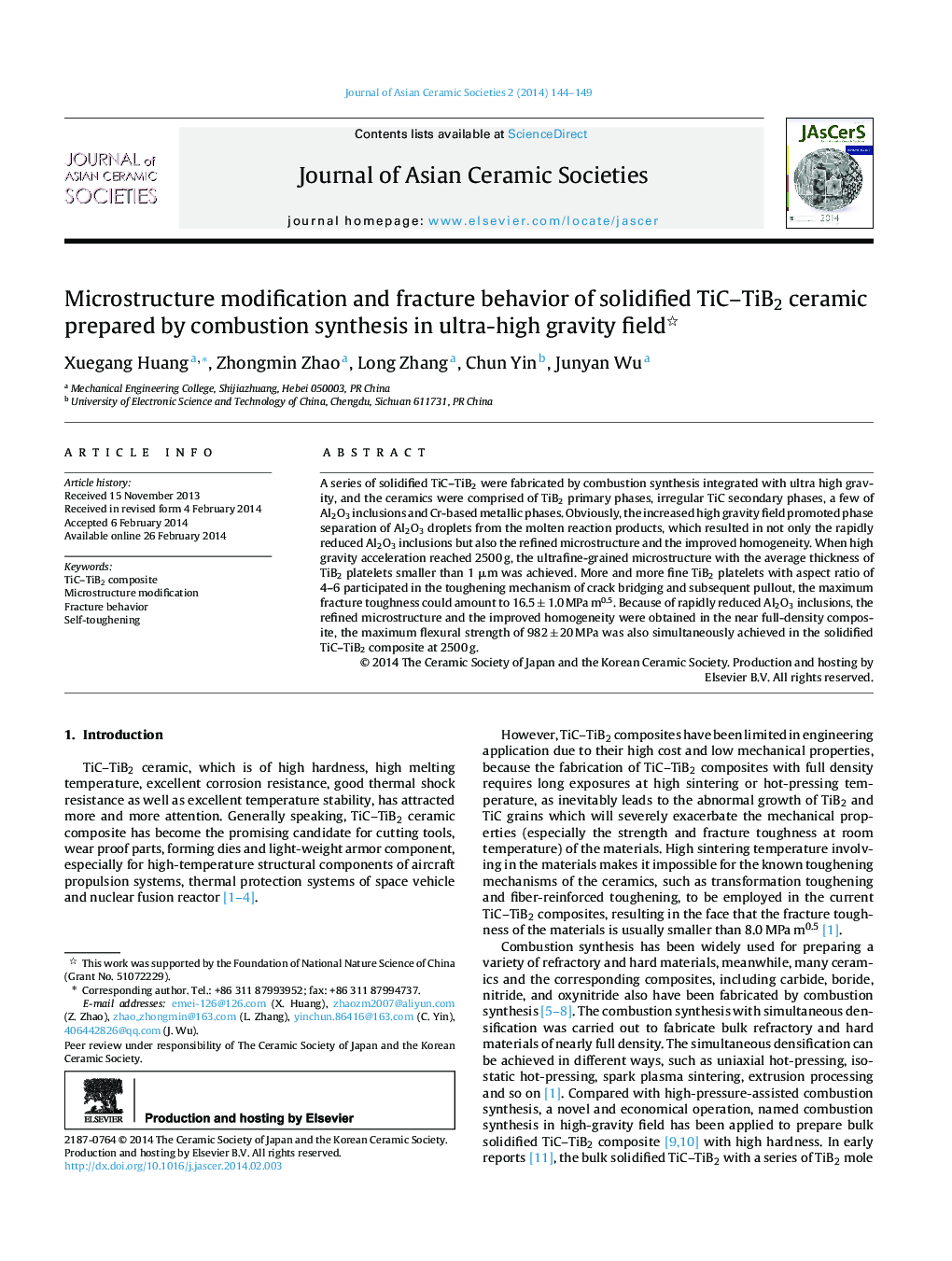| Article ID | Journal | Published Year | Pages | File Type |
|---|---|---|---|---|
| 1473392 | Journal of Asian Ceramic Societies | 2014 | 6 Pages |
A series of solidified TiC–TiB2 were fabricated by combustion synthesis integrated with ultra high gravity, and the ceramics were comprised of TiB2 primary phases, irregular TiC secondary phases, a few of Al2O3 inclusions and Cr-based metallic phases. Obviously, the increased high gravity field promoted phase separation of Al2O3 droplets from the molten reaction products, which resulted in not only the rapidly reduced Al2O3 inclusions but also the refined microstructure and the improved homogeneity. When high gravity acceleration reached 2500 g, the ultrafine-grained microstructure with the average thickness of TiB2 platelets smaller than 1 μm was achieved. More and more fine TiB2 platelets with aspect ratio of 4–6 participated in the toughening mechanism of crack bridging and subsequent pullout, the maximum fracture toughness could amount to 16.5 ± 1.0 MPa m0.5. Because of rapidly reduced Al2O3 inclusions, the refined microstructure and the improved homogeneity were obtained in the near full-density composite, the maximum flexural strength of 982 ± 20 MPa was also simultaneously achieved in the solidified TiC–TiB2 composite at 2500 g.
